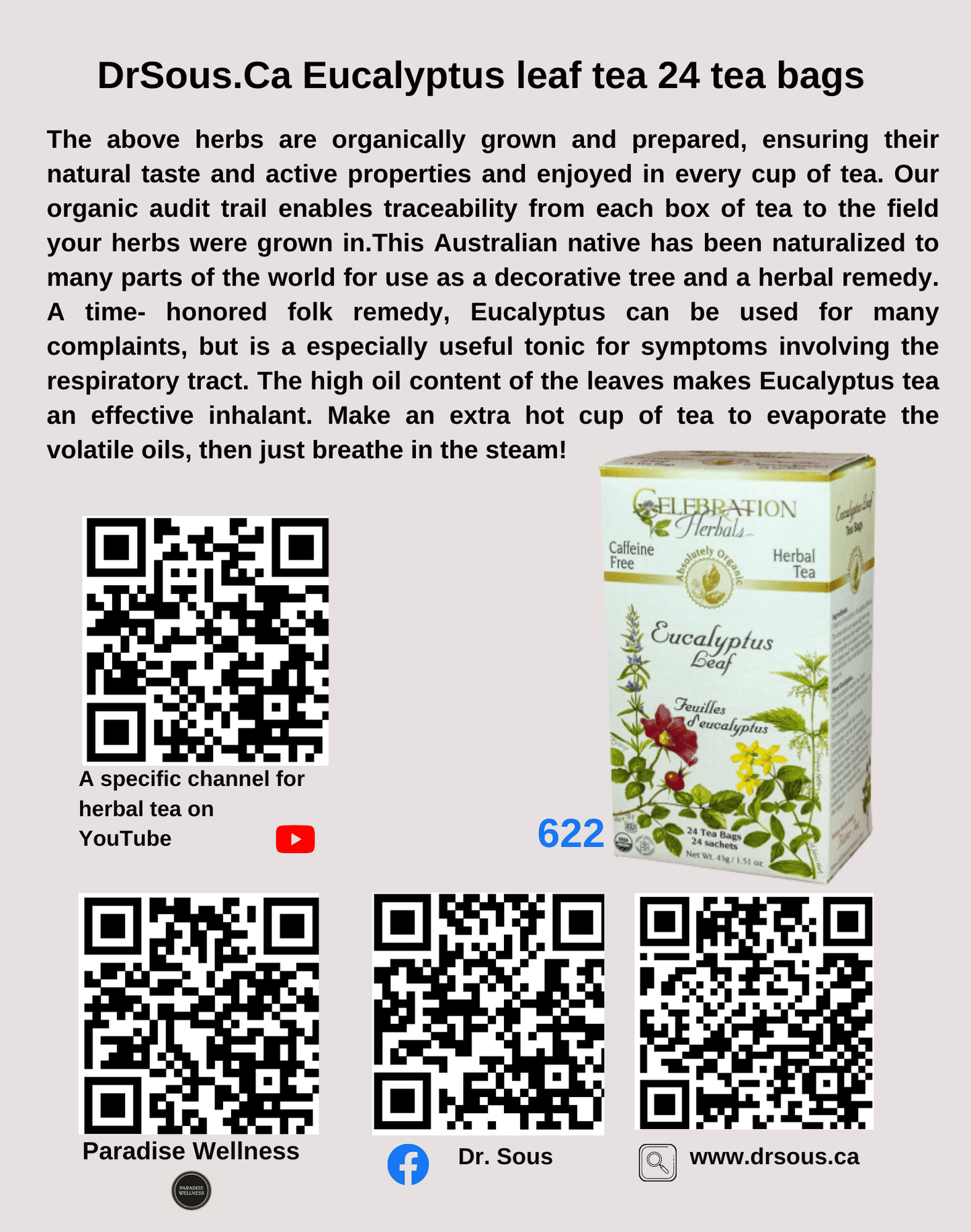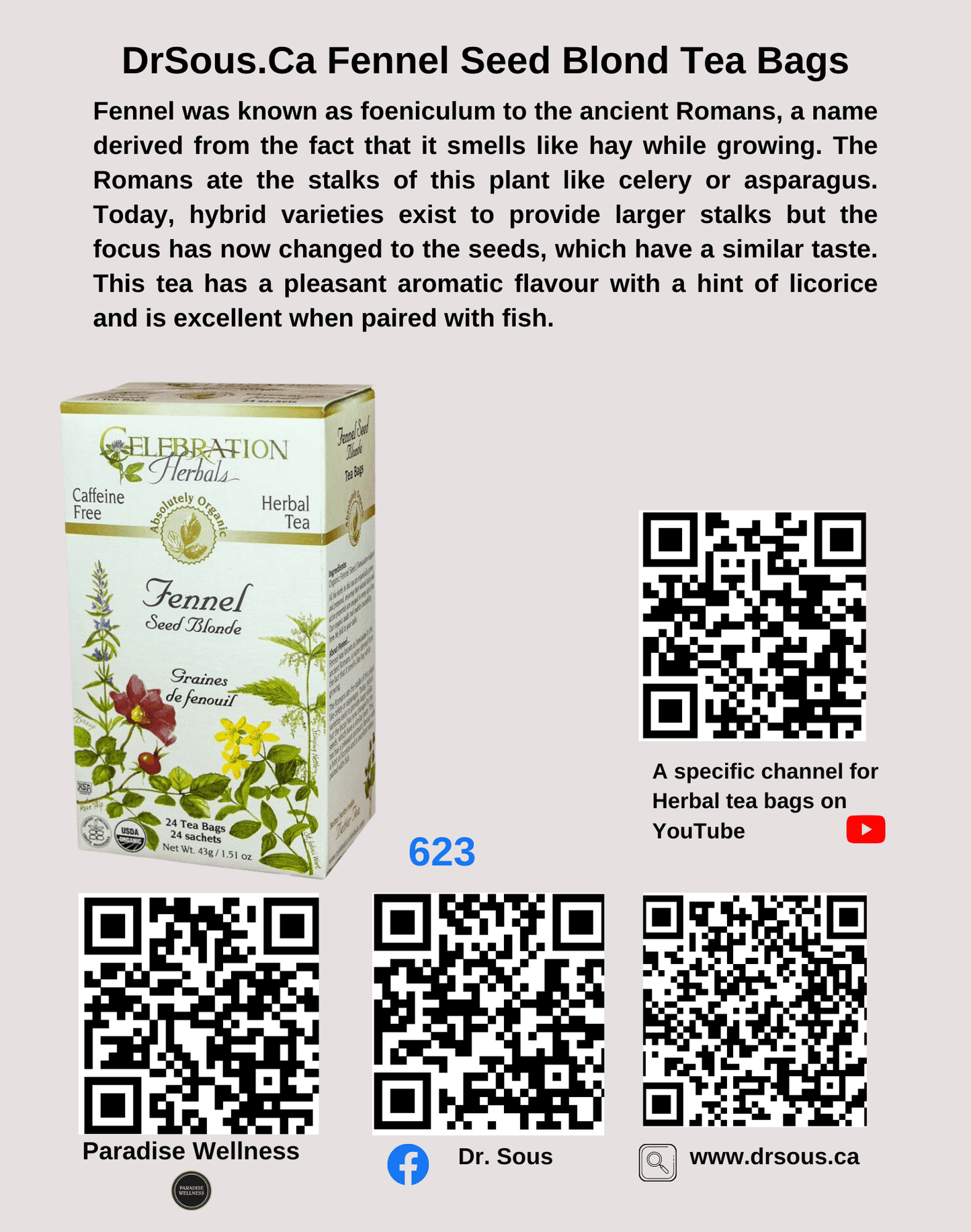3603.Respiratory Conditions/ Sore Throats/ Cough/Allergies 4
3603.Respiratory Conditions/ Sore Throats/ Cough/Allergies 4
Couldn't load pickup availability
DrSous.Ca
What Are the Parts of the Respiratory System? The respiratory system includes the nose, mouth, throat, voice box, windpipe, and lungs. Air enters the respiratory system through the nose or the mouth. If it goes in the nostrils (also called nares), the air is warmed and humidified.
What are the 7 main parts of the respiratory system?
Respiratory system
- Nose
- Mouth
- Throat (pharynx)
- Voice box (larynx)
The above herbs are organically grown and prepared, ensuring their natural taste and active properties and enjoyed in every cup of tea. Our organic audit trail enables traceability from each box of tea to the field your herbs were grown in.
About Eucalyptus…
This Australian native has been naturalized to many parts of the world for use as a decorative tree and a herbal remedy. A time- honored folk remedy, Eucalyptus can be used for many complaints, but is a especially useful tonic for symptoms involving the respiratory tract. The high oil content of the leaves makes Eucalyptus tea an effective inhalant. Make an extra hot cup of tea to evaporate the volatile oils, then just breathe in the steam!
Marshmallow Root Tea
- Caffeine Free
- Herbal Tea
- Absolutely Organic
- No Flavorings
- No Preservatives
- No Sweeteners of Any Kind
Marshmallow’s genus "Althaea" is derived from the Greek word atho, meaning "to cure." This herb has been used for centuries. It was advocated by Hippocrates for its virtues, and it has long been used as a food in times of famine.
Native to Europe, Marshmallow grows in wet soils. Its roots are harvested in the autumn.
Marshmallow has many uses and a good reference book is helpful. It is commonly used as a tea, poultice, syrup, ointment, gargle, capsule or wash.
With this bulk package you can create a vast array of home remedies including tinctures, capsules, poultices, salves and, of course, herbal tea.
- Kosher
- Organic
- Herbal Tea
- Caffeine Free
Fennel was known as foeniculum to the ancient Romans, a name derived from the fact that it smells like hay while growing.
The Romans ate the stalks of this plant like celery or asparagus. Today, hybrid varieties exist to provide larger stalks but the focus has now changed to the seeds, which have a similar taste. This tea has a pleasant aromatic flavour with a hint of licorice and is excellent when paired with fish.
Share







